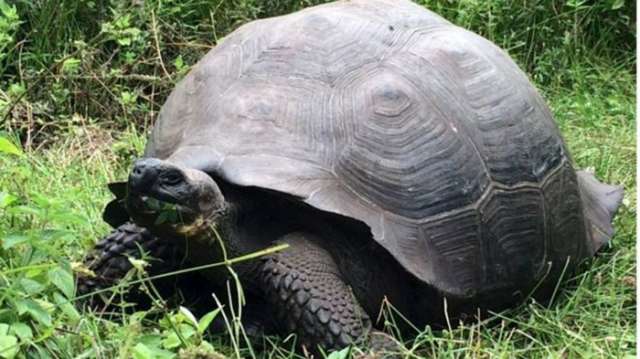It is the 15th known tortoise species to be discovered on the archipelago, though four are now extinct.
The new species has been named "Chelonoidis donfaustoi", after a retired Galapagos park ranger.
Giant tortoises in the Galapagos tend to weigh up to 250kg and live longer than 100 years.
Experts had long believed that the two giant tortoise populations on the Santa Cruz island were the same species, but genetic testing proved this to be wrong, Ecuador`s environment ministry said in a statement on Wednesday.
The newly-identified species, which is also known as the Eastern Santa Cruz tortoise, lives on the eastern side of the island and was also found to be genetically different from tortoises on other islands.
Yale University biologist Gisella Caccione, who led the team of scientists, said the shell of the tortoises had a more compressed shape than other species.
Scientists and conservationists are hoping the discovery will help to protect and restore the tortoise, which is considered vulnerable, with an estimated population of 250.
There are believed to be more than 2,000 tortoises of other tortoise species living elsewhere on the island.
Giant tortoises were among some of the well-known creatures studied closely by British naturalist Charles Darwin in the Galapagos Islands in the 1830s.
More about:















































